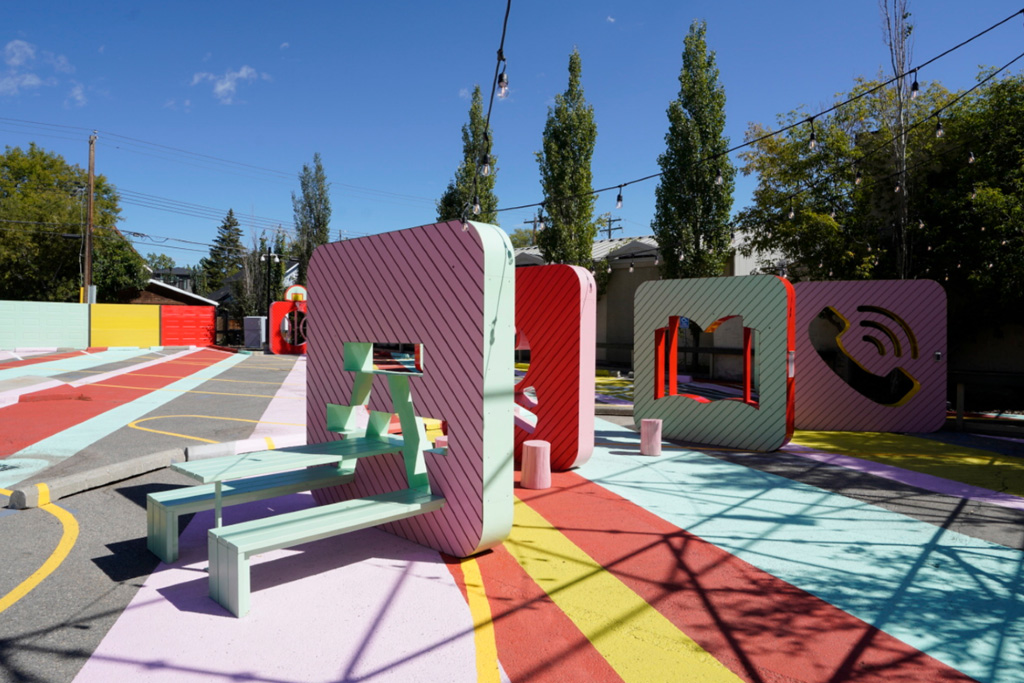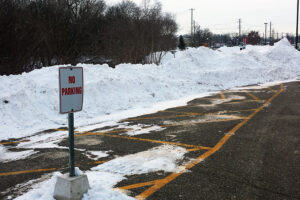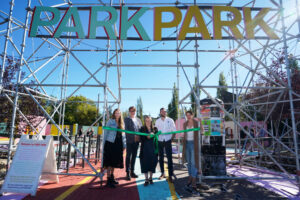Brendan McEwen – Director, Electric Mobility & Low Carbon Strategies, AES Engineering Ltd.
Over the next two decades, Canadian cities will experience a profound transition from transportation systems dominated by personal vehicles with combustion engines to electric mobility systems. “Electric mobility” encompasses personal electric vehicles (EVs), electric transit, e-bikes, car-sharing, ride-hailing, ride-sharing, and perhaps one day, autonomous robo-taxis. Parking professionals have a crucial role to play in speeding the transition to electric mobility, realizing the benefits that it can provide to their communities and to parking authorities’ bottom line.
The transition to electric mobility will provide financial, safety and quality of life benefits for all members of our community. Depending on where you are in Canada, EVs typically cost 65% to 80% less to fuel than comparable internal combustion vehicles. Likewise, Consumer Reports recently published data confirming that EVs have half the maintenance cost of conventional vehicles. All told, Canada’s 2 Degrees Institute estimates that the average Canadian EV driver will save $27,000 in fuel and maintenance costs over a 10-year operating life.
EVs still currently have higher initial costs than conventional vehicles, due to the cost of batteries. However, battery costs are declining rapidly – industry average lithium-ion battery costs have reduced from approximately $1200/kWh of battery capacity in 2010, to $156/kWh in 2019. Average battery costs are projected to decline to $100/kWh by about 2024, at which point there will be no price premium for EVs. Indeed, Elon Musk recently described how Tesla can achieve costs of approximately $65/kWh in the next three years. Given the improvements in battery technology and manufacturing, sources as diverse as the Canadian Vehicle Manufacturers Association, International Council on Clean Transportation, and Bloomberg New Energy Finance agree that battery cost reductions…
By David Rich
The parking industry began discussing sustainable parking nearly two decades ago. At first the entire concept seemed counterintuitive. How could builders design structures to maximize performance while minimizing waste and actually improve the environment? The idea now no longer seems so foreign and through creative design we can create parkades that minimize the impact of vehicles on the environment – at least while those vehicles are in the parking facility.
Initially, the primary focus was on green roofs, recycled content, PV solar arrays, and operational strategies. Idle reduction was also a primary key area of focus. If we could design entrances and exits that minimize idling time, the amount of exhaust emissions created by queuing vehicles could be significantly reduced. As for design features, early ideas were admittedly modest. Some parkades had green roofs that reduced their carbon footprint; others included solar panels and green screens. In the infancy of green parking, designers did what they could to promote sustainability, but it was a learning process and left much room for improvement.
Sustainable Approaches
Sustainable strategies have matured significantly over the past twenty years and play an important role in promoting green parking. Sustainable parkades often integrate technologies and strategies such as energy efficient lighting and ventilation systems, guidance systems that assist drivers in finding an available space more quickly, electric vehicle charging stations, carsharing programs, and micro-mobility options.
They also include stormwater management practices like bioswales, permeable pavement, and other strategies that reduce runoff. Many of these stormwater management strategies can also collect rainwater for re-use in landscape irrigation, hydrating landscaping or even for cleaning and maintaining the parkade itself. By recycling rainwater, this design element can reduce costs and the need to use city water for…
By Chris Scheppmann
Parking guidance is one of the most important technologies to emerge in recent years. The initial appeal of the technology is that it dramatically improved the parking experience while, at the same time, helping to maximize parking occupancy and improve management. Drivers benefit by not having to waste valuable time searching for a parking space.
Parking guidance also benefits owners and parking organizations by providing essential data. When parking owners and managers have access to real time data about how their parking facilities are being utilized, whether they are at full or near-full capacity, and when they tend to be busiest, they can make better decisions about how to manage those parking resources. Better and more comprehensive information tends to lead to better management decisions. It easy to see how parking guidance offers a classic win/win scenario: drivers get a better parking experience, while parking owners improve their operations and make more money.
And with the impending dawn of the Smart City age and the eventual introduction of self-driving vehicles, parking guidance will become all the more important. It will be the key technology for the success of smart cities because by guiding drivers directly to available parking, it can significantly minimize travel times and reduce roadway congestion. Some cities in the United States are already connecting the parking guidance networks of private parking facilities to their municipal grids to create city-wide guidance networks, and that will soon be the norm in cities across Canada, as well.
Intelligent Simplicity
Everyone loves the concept of parking guidance, but in the past, many owners have been scared away by the cost. When the technology was introduced, owners had just two options: install sensors over every parking stall at considerable expense, or use less expensive technology that…
By Pam Strong, Lake Simcoe Region Conservation Authority
In the Q2 2020 issue of Parker magazine, we highlighted the significant issues that salt is causing to our road and parking lot infrastructure, as well as to our freshwater resources. Many stakeholders, including road managers and environmental agencies, have been working to tackle this issue and apply less salt; however much of this effort has focused on roads. As part of this effort, the Lake Simcoe Region Conservation Authority retained GHD in 2017 to develop the Parking Lot Design Guidelines to Promote Road Salt Reduction. These guidelines were developed with the recognition that parking lots contribute a significant amount of chloride from salt, approximately 20% in the Lake Simcoe watershed, and significantly more in more urbanized areas, such as Toronto and Peel Region. These guidelines provide some tangible options for those involved in parking lot design and maintenance to reduce the amount of salt that is used in these areas, thus protecting parking lot infrastructure and water resources.
The guidelines were developed to demonstrate to those involved in the planning, design, and maintenance of parking lots that they can be designed from the outset in such a way that they require less salt to be applied to maintain an acceptable level of service and safety. Through stakeholder interviews and design charrettes, we identified four design features that can help to reduce the amount of salt needed to maintain safe conditions. Also included with the guidelines are site examples that demonstrate how the features can be used on several different development types. These site types include:
- Large size commercial development (greater than 10 ha)
- Medium size commercial development (5-6 ha)
- Small size commercial development (less than 3 ha)
- Institutional development (public school)
We also developed two…
By Sidney Starkman, Planning & Development Analyst, Calgary Parking Authority
When you ask people outside of the parking industry what they think about when they hear the words “surface parking lot”, they may say: unwelcoming to pedestrians, only used at peak times or bland space. Though we can’t boast about being home to the largest parking lot in the world, we do have an awful lot of surface parking space in in Calgary, Alberta. We at the Calgary Parking Authority (CPA) believe in building a better Calgary by working collaboratively to support the current and future parking needs of the communities we serve. Given this mandate and the ample space available, we set out to change the narrative about what surface parking lots can look like, how they function, and how they integrate into a neighbourhood: we launched a placemaking project to reshape a lot by engaging professionals to innovate the space.

This project began with an open design competition managed by the Calgary Municipal Land Corporation (CMLC). The call for submissions asked for a creative intervention that re-imagined how surface parking lots can be designed; something that would delight and inspire, while continuing to operate successfully as a parking lot.
The goals of the project were to:
- encourage critical thought and conversation on parking lots;
- beautify a utilitarian space;
- improve the quality of life for users and residents; and,
- place make, turning a single-use space into somewhere people can have a positive, interactive, and emotional experience.
To select the perfect location, we analyzed all available surface parking options within the city. We wanted at a busy, mid-sized lot (30 stalls) which would guarantee visitors to the space, and one located in an active community where residents embrace unfamiliar projects. We were…








